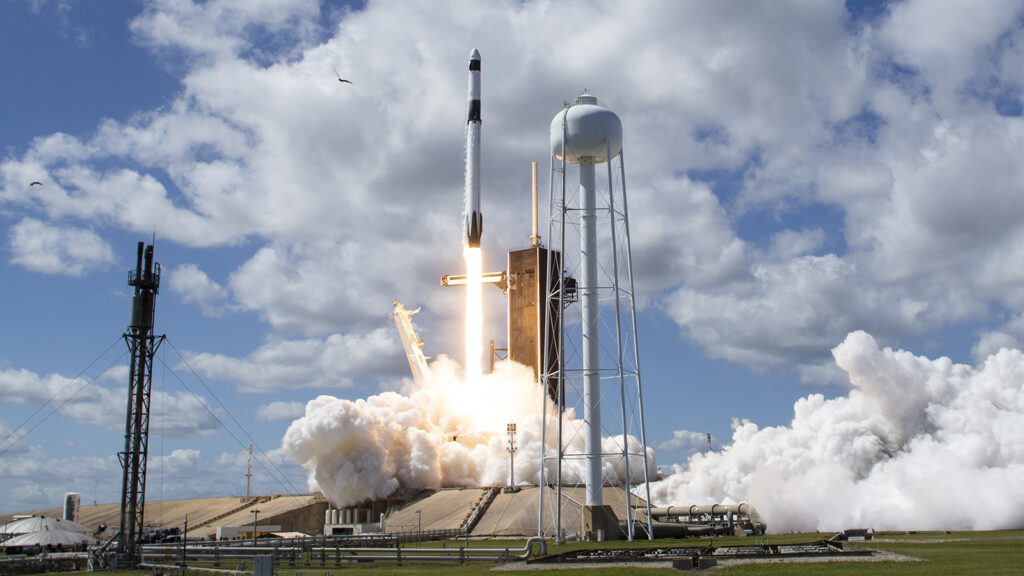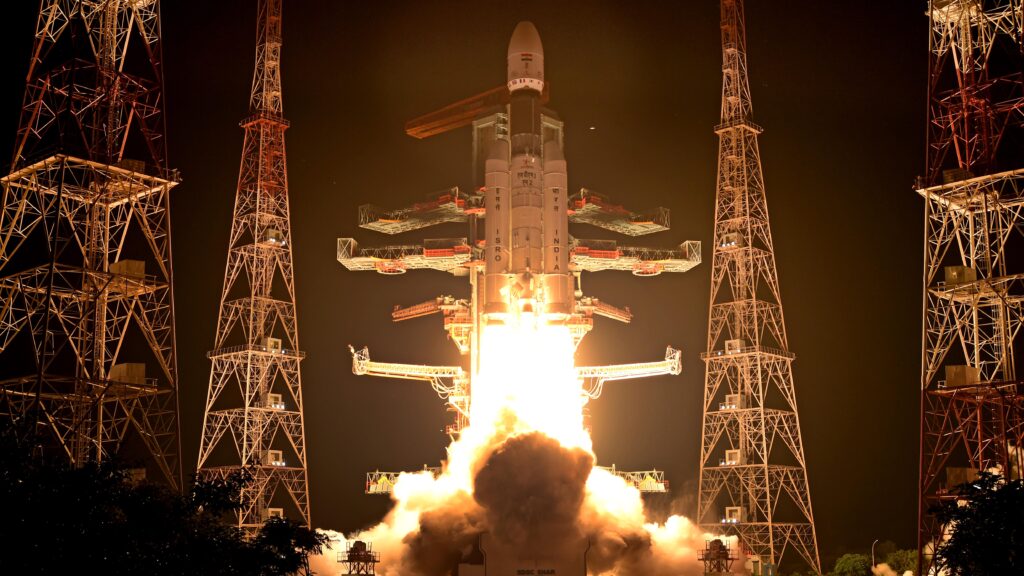Low Earth Orbit: The Next Arena of Political Tension

Low Earth Orbit is very much connected to life on Earth, including services such as e-commerce and tele-education.
Photo: Unsplash
Low Earth orbit — or LEO — is becoming increasingly commercialized, with large numbers of private satellites being launched or in orbit. However, it is also increasingly seen as a national security realm where tensions are building between the USA, Russia and China.
BRINK spoke to Namrata Goswami, an independent scholar on space policy, and an expert on the geopolitics of space. In 2020, she co-authored the book Scramble for the Skies: The Great Power Competition to Control the Resources of Outer Space.
GOSWAMI: Low Earth orbit has historically been seen as critical for military operations, intelligence gathering and national security purposes. What has changed today is that it is also becoming a very important area for supporting telecommunications, satellite internet, weather forecasting and navigation and global positioning systems.
Government agencies, especially in the U.S, and to an extent in China and India, are starting to support private sector companies in building their commercial space capability, and there has been an exponential rise in the commercialization of LEO. You can see that with companies like SpaceX, OneWeb and China’s private companies that are building small satellites for telecommunication and satellite internet purposes.
NASA Is Starting to Step Back in Favor of the Private Sector
BRINK: Does it mean that NASA is intentionally withdrawing from this area of space?
GOSWAMI: NASA is starting to use its capability, its expertise, its historical legacy to build up the private space sector in the U.S. and actually fund and contract out several different avenues to support that. So, recently, NASA signed agreements with four U.S. companies to build commercial space stations: Blue Origin, Nanoracks, Northrop Grumman and Axiom Space.
There has been a lot of debate in the U.S. as to whether to extend the International Space Station, of which the U.S is the key actor and which is the largest installation in low Earth orbit.
Just recently, the U.S. administration extended the life of the International Space Station to 2030. The original plan was to close the space station and de-orbit it by 2024, but it has now got a new lease of life. So NASA will continue to play a role in supporting the International Space Station, but you will also have private companies like Axiom Space, Nanoracks, Northrop Grumman and Blue Origin developing their own commercial space stations as well. So NASA is not really getting out of the LEO, but it is starting to take a secondary role.
BRINK: What are the main commercial activities in LEO?
GOSWAMI: When we’re talking about LEO, that’s anywhere from about a hundred kilometers above the Earth to about 36,000 kms above Earth.
Everything further than 36,000 kms is seen as cislunar space, i.e., between the Earth and the moon, and that’s where geostationary orbit is, which is basically national security satellites and some commercial satellites. Then, anything beyond the moon, which is about 384,400 kms away, is seen as deep space.
From nothing, China’s commercial space sector has actually been able to register about $3 billion in investment annually since 2016 because of state support.
In the LEO, you have weather satellite services, you have support for navigation, and satellite internet is becoming a very important area of investment. The other important areas that low earth satellite services can also help are agriculture and farming by offering data on weather that can predict where you can actually harvest and also data for fisheries.
LEO is very much connected to the life we live today on Earth, including services such as e-commerce and tele-education. That’s why the low Earth orbit area is getting so critical.
An Absence of Regulation
BRINK: Do you see LEO becoming a venue for political tension?
GOSWAMI: There could be tensions, not just based on the different ideological commitments of different nations, but also in terms of the fact that low Earth orbit is not regulated.
So unlike geostationary orbit, which is regulated by the International Telecommunication Union, in low Earth orbit, all that is required from the different spectrum/orbital slots is a license from national space agencies. If you’re a U.S. company, you apply to the Federal Communications commission, and they will give you a license to basically launch your satellite.
Political tensions can come in regarding these orbital slots — they’re on a first-come, first-serve basis. For example, a Chinese company like GalaxySpace, which wants to launch 142 5G satellites, might want a similar orbital slot to SpaceX, an American company. This could lead to tension, because we do not have a regulatory commission to deal with these issues in low Earth orbit.
It could also happen that you might accidentally run into each other’s satellites because there is no international body that mandates where the satellites are. China’s national space regulatory body has registered about 12,992 satellites to be launched by 2030. India also wants to launch thousands of satellites.
4,550 Satellites Already and Many More to Come
We are talking about a scenario that is very different from the Cold War, when there were not that many satellites. Today, we have about 4,550 satellites in low Earth orbit, according to the Union of Concerned Scientists database, which is one of the most updated. And soon, we could have thousands more.
Companies do not want to spend money on maneuvering their satellites in space because that’s expensive. You have to have fuel. And so it could be that one company might fit its satellites to maneuver, but some other company from another country might not do that. And that could lead to lack of compliance.
There is no common platform where different countries and companies can share data on where their satellites are. This could lead to accidents or even to the deliberate destruction of satellites as well during conflict. In 2019, the European Space Agency had to maneuver one of its satellites because it came very close to a SpaceX satellite and its communication channel to SpaceX was via an email which SpaceX didn’t receive.
The Rise of China in Space
BRINK: You mentioned China. How rapidly is China catching up with the U.S. in this area?
GOSWAMI: Since 2014, China has actually made space a critical new infrastructure. They are investing in three sectors regarding space. One is satellite development because they see that as a billion dollar industry in the years to come. The second area that they’re focusing on is cislunar space, which is between the earth and the moon, and then finally deep space exploration.
So from nothing, China’s commercial space sector has actually been able to register about $3 billion in investment annually since 2016 because of state support. And in the next few years, because China has a goal of building space into a critical new infrastructure, which the U.S. does not have, they could catch up.




